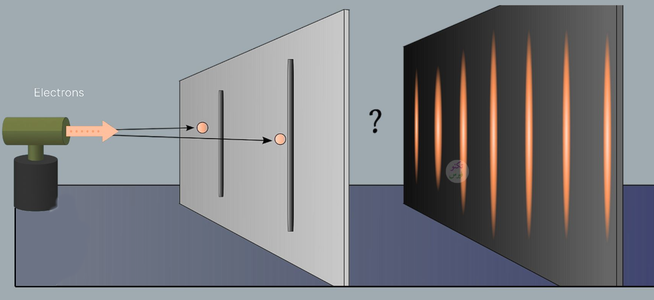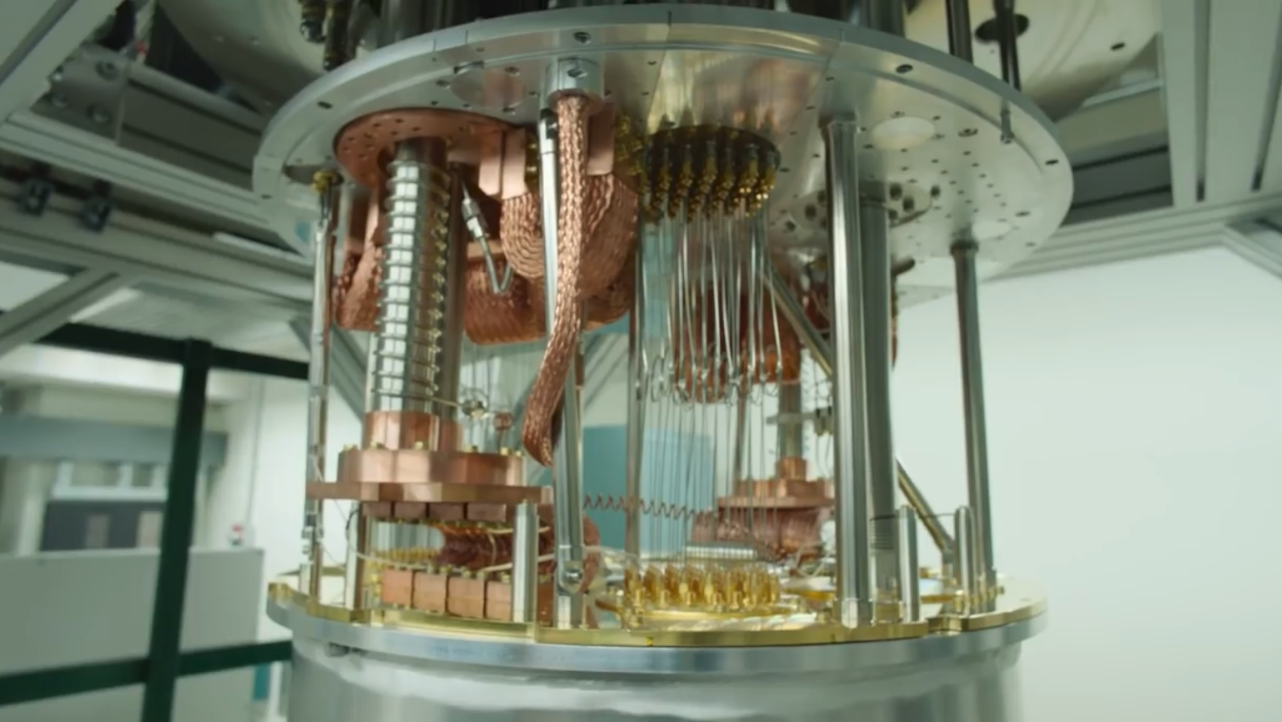The double-slit experiment, also known as Young’s slits, dates back to 1801. It was then that the English scientist Thomas Young demonstrated light’s wave-like nature. He shone a light beam through a barrier with two narrow slits, producing an interference pattern on a screen behind it. This pattern consisted of alternating bright and dark regions; the bright areas corresponded to wave peaks, while the dark areas corresponded to wave troughs. This clearly showed that light behaves as a wave, spreading and interfering much like water waves.
In 1927, two independent teams of physicists conducted a similar experiment, but instead of light, they fired electrons through two narrow slits. They released a single electron at a time, and after repeating the process, an interference pattern similar to that seen with light emerged on the screen. This indicated that the electron behaves like a wave. If it had behaved solely as a particle, only two impact zones behind the slits would have appeared, without the wave interference pattern.
The biggest surprise came when scientists attempted to observe which slit the electron passed through. The interference pattern vanished completely, replaced by a diffusion pattern typical of classical particles. Two distinct impact zones appeared behind each slit, and electrons accumulated as if they were merely particles passing through one slit or the other, showing no wave-like behavior. In other words, when observed, the electron acted like an ordinary particle, much like a tiny ball, without exhibiting any interference pattern. This suggested that the act of measurement directly affects the electron’s nature.
This marked a pivotal moment in the history of quantum mechanics. It confirmed that particles possess wave-particle duality, an idea first proposed by Louis de Broglie in 1924 and mathematically formalized by Erwin Schrödinger in his famous equation. It also proved that the measurement process influences the experiment’s results, opening the door to various interpretations of quantum mechanics and igniting debates about the state of particles before observation — a debate spearheaded by Niels Bohr and Albert Einstein at the time.
Einstein believed that particles had definite positions and wave-like behavior, existing in specific, deterministic states even before measurement. In contrast, the Copenhagen interpretation, led by Niels Bohr, posited that particles exist in a state of quantum superposition, meaning they are theoretically in all possible states until measured. According to this interpretation, the act of measurement itself affects the particle’s state, implying that one cannot discuss an electron’s position before measuring it. While Bohr did not explicitly state that a particle physically exists in multiple states simultaneously, any physical interpretation of his stance could lead to this idea.
The debate continues to this day regarding the interpretation of particle states before measurement and the extent to which measurement influences experimental outcomes. Numerous different interpretations have emerged, such as the many-worlds interpretation, which suggests that all possibilities are realized in different universes, and Bohmian mechanics (hidden variables theory), which adopts a view closer to Einstein’s. This interpretation proposes that the particle is influenced by a pilot wave that controls its trajectory and determines its behavior, giving it perfectly defined characteristics even before measurement, unlike the purely probabilistic Copenhagen interpretation.









